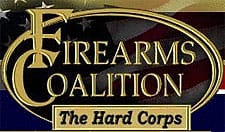Gun Control Doesn’t Work
By Jeff Knox

Washington, DC –-(Ammoland.com)- If firearms were indeed as inherently dangerous as gun control advocates suggest, there should be millions of crimes, murders, suicides, and accidents involving firearms each year, and those numbers should be escalating since the total number of firearms and firearms owners have risen substantially over the past few years.
In reality, numbers of firearms related crime and accidents have steadily dropped while gun sales have gone through the roof and more states have liberalized laws dealing with the carry of arms in public. Independent, peer reviewed studies show that firearms are used 5 times more often to stop crime than to commit crime – and that doesn’t count police use or the deterrent factor of criminals knowing their intended victims might be armed.
Guns are used by private citizens to stop criminal activity some 2.5 million times each year and rarely do they even fire a shot doing it. Recreational shooters fire billions of rounds each year, but firearms injury accident numbers keep going down and are at record lows. Gun control laws only impact those who obey them – the law-abiding.
There is no logic – or evidence – to support restrictions on the good guys.
In the early 1970’s, when Neal Knox was editor and publisher of Rifle and Handloader magazines, he created a bumper sticker that posed the question, “Where Has a Gun Law Reduced Crime?” He knew that the answer to the question was “Nowhere.” Every credible study has reached that conclusion and that answer was borne out yet again in 2003 and 2004 respectively when the Centers for Disease Control & Prevention, and the National Academy of Science both attempted to settle the issue once and for all. The CDC and NAS each set up panels of experts who conducted comprehensive reviews of all of the available research on gun control laws with the objective of identifying which specific strategies were most effective at reducing “gun violence” in crime, suicide, and accidents.
The two groups independently concluded that available data was insufficient to prove that any gun control laws, alone or combined, are effective at reducing criminal misuse of firearms, suicides using firearms, or firearms related injury accidents. Even though these organizations have track records of gun control advocacy, and the members of the panels were virtually unanimous in their personal support for gun control, they were still unable to locate credible evidence to demonstrate any positive effect from any gun control scheme.
The CDC and NAS panels reviewed over 250 published academic studies, almost 100 books, and nearly 50 government reports all covering some 80 different gun control schemes – from background checks and waiting periods to registration and outright bans on entire classes of firearms – some covering laws dating back 100 years or more. Had the subject of their inquiries been almost anything other than gun control, or the panels had been truly unbiased, the lack of supporting evidence would have been recognized as proof in itself and the panels would have reached the obvious conclusion that gun control laws do not work. That indeed they cannot work because they address tools not behavior or the social circumstances at the roots of that behavior. If gun control did work there would undoubtedly be enough evidence to allow these experts to reach a conclusion other than “inconclusive.” The experts’ inability to reach a positive conclusion is even more astounding when it is considered that the majority of the existing data has been generated by researchers who have publicly expressed a personal bias in favor of gun control and who were funded by organizations such as the Joyce and MacArthur foundations, which have gun control as part of their organizational agenda. The CDC and NAS panels’ conclusions of “inconclusive” reveal more about the researchers’ own bias than the causes and possible cures of criminal behavior.
One of the most difficult challenges of the gun rights movement is overcoming the emotional, gut reaction that people think of as “common sense.”
It is easy to assume that more gun control will result in less crime; it seems obvious. But the truth is counter-intuitive. In reality, more guns equal less crime while more restrictions result in higher crime. This is true because reasonable, responsible, law-abiding people remain reasonable, responsible, and law-abiding whether they have a gun or not, but when they do have a gun, they are better able to stop or prevent criminal activity. Criminals and idiots do what criminals and idiots do regardless of laws to the contrary and firearms restrictions merely guarantee them a safer working environment.
The truth is that there is no gun control law that actually works.
Gun control laws are wholly ineffective at reducing crime, suicide, or accidents, and they often snare innocents in their complicated red tape. They cost hundreds of millions of dollars in direct and indirect costs to taxpayers leaving fewer resources available for truly effective prevention programs. Advocates of gun control are long on emotion, but short on results. Citizens should demand proof of efficacy before funding or allowing any governmental agency to usurp personal liberties. Not only are gun control laws ineffective, they are counterproductive – not to mention unconstitutional.
Gun control is a crime.
About:
The Firearms Coalition is a loose-knit coalition of individual Second Amendment activists, clubs and civil rights organizations. Founded by Neal Knox in 1984, the organization provides support to grassroots activists in the form of education, analysis of current issues, and with a historical perspective of the gun rights movement. The Firearms Coalition is a project of Neal Knox Associates, Manassas, VA. Visit: www.FirearmsCoalition.org
